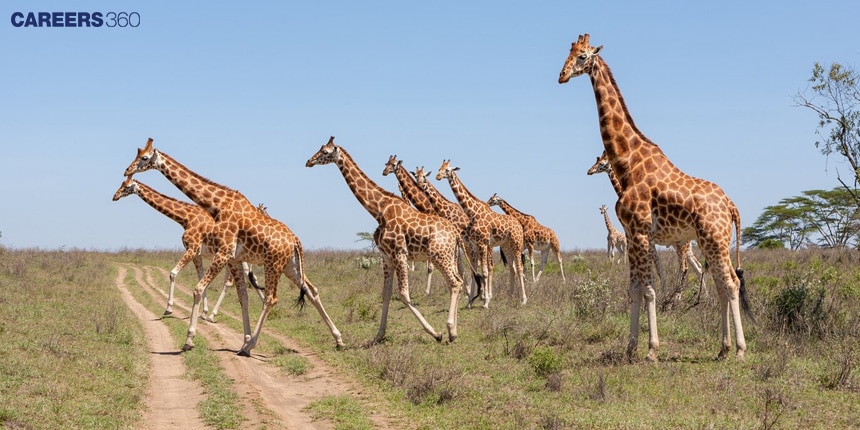Lamarckism and Theory: Definition and Examples
What Is Lamarckism?
Lamarckism refers to an early evolutionary theory named after a French biologist named Jean-Baptiste Lamarck. It concentrates mainly on the role of use and traits disuse and the inheritance of characteristics that have been acquired. While it was mainly succeeded by Darwinian evolution, Lamarck's ideas were of considerable importance in the history of thought about evolution.
Don't Miss: Most scoring concepts for NEET | NEET papers with solutions
NEET 2025: Syllabus | PYQs | Crack NEET in 2 months - Study Plan
NEET Important PYQ & Solutions: Physics | Chemistry | Biology | NEET PYQ's (2015-24)

Lamarck's Theory
Lamarck's theory was that organisms evolve by the adaptation of their traits to the environment in which they live and to their needs.
Change Through Use And Disuse
Lamarck proposed that an organism could modify its physical characteristics by use or misuse of body parts: The more frequently an animal used a particular limb or organ, that part would gain strength and develop over time; also, traits unused would gradually decrease and weaken.
Organisms Driven To Greater Complexity
Lamarck believed that life necessarily gravitated toward greater complexity and perfection. They asserted that this very drive being vested in simple organisms makes them evolve continuously into higher and more complex forms. This idea founded itself on the principle of evolution as a progressive process leading to increasing complexity and sophistication in organisms.
Inheritance Of Acquired Characters
Probably the central doctrine of Lamarck was that of the inheritance of acquired characteristics. He argued that any characteristic that was modified or developed during an organism's lifetime, by use and disuse, could be passed on to its offspring. In this way, the changes an organism undergoes owing to the environment and behaviours it resorts to can influence directly the characteristics of its subsequent descendants.
Effect Of Environment And New Needs
Lamarck emphasised the role played by the environment in shaping organisms. He viewed that any change in the environment creates new needs and difficulties for an organism, which the organism tries to adjust to. These, through continued environmental pressure, are transmitted into changes in the succeeding generations until transformation in that species occurs.
Example Of Lamarckism
Several examples may be cited in which acquired traits were supposedly passed on to offspring according to Lamarck's theory.
Lengthening of Giraffe's Neck:
Lamarck elaborated that ancestors of these giraffes stretched their necks to reach high leaves on trees. This stretch had areas where the length of the neck was increasing generation after generation and was passed on to the offspring of that generation.
Webbed Feet in Aquatic Birds:
He thought that webbed feet in aquatic birds such as ducks evolved because they stretched their toes while swimming, which was an acquired trait passed on to subsequent generations.
Blindness in Cave Fish:
Since the fish in a cave did not use their eyes in the dark, supposedly, over generations their eyes had become blind. Lamarck held that this acquired blindness is then passed on to subsequent generations.
Lamarckism Vs Darwinism
Lamarckism and Darwinism differ essentially is in the mechanisms of evolutionary changes they present.
Mechanism Of Evolution
Lamarckism: Evolution through the use and disuse of traits and inheritance of acquired characteristics
Darwinism: Evolution through natural selection on heritable variations within populations
Role Of Environment
Lamarckism: Environmental change leads to the adaptation of organisms, which then leads to the passing of these adaptations to offspring.
Darwinism: Differential survival or increased reproductive potential is brought about as a result of environmental selection for particular advantageous characteristics in individuals.
Inheritance
Lamarckism: Acquired characteristics in the lifetime of an organism are passed onto its offspring.
Darwinism: Genetic characteristics are the only inherited ones transmitted to offspring, and such characteristics occur by random mutation and recombination.
Recommended video for Lamarckism
Progression
Lamarckism: The evolutionary process is progressive, leading toward complexity and perfection.
Darwinism: Nothing in evolution shows any progress; the causative elements are adaptation to changing conditions in the environment and struggle for existence.
Conclusion
Lamarckism was one important stepping stone toward the development of evolutionary biology, as it maintained that organisms could change because of their environment. While presently mostly replaced by Darwin's theory of natural selection, Lamarck's ideas embedded several concepts that go on to influence evolutionary thought. The future work that can be done in evolutionary biology is going to integrate further the parts of epigenetics and environmental interactions.
Frequently Asked Questions (FAQs)
The evolutionary theory of Jean-Baptiste Lamarck holds that organisms can pass on the characteristics they acquire in their lifetime to subsequent generations.
Lamarckism talks about the inheritance of acquired traits because of the use and disuse of organs; in contrast, Darwinism deals with natural selection and survival of the fittest.
A classical example is the stretching of the neck of the giraffe to reach higher leaves, and this gets passed on to the next generation.
Lamarckism was refuted when no empirical evidence was given, and proof for the heredity of acquired traits failed with experiments like that of August Weismann.
Lamarck's theory includes the idea that organisms change through the use and disuse of traits, are driven to greater complexity, inherit acquired characteristics, and adapt to their environment and new needs.
Also Read
03 Dec'24 10:56 AM
30 Nov'24 08:28 PM
27 Nov'24 08:01 PM
26 Nov'24 11:40 PM
23 Nov'24 01:48 PM
21 Nov'24 05:41 PM
19 Nov'24 02:01 PM
19 Nov'24 11:02 AM
19 Nov'24 08:45 AM
18 Nov'24 10:54 PM